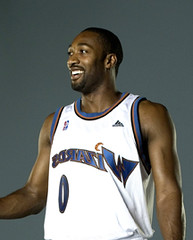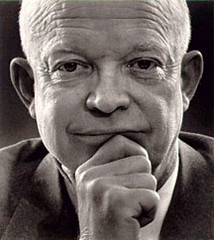If you ever want to see an organization that inspires admiration and loathing at the same time, look no further than Ragan Communications. If you don’t know, it is a publisher of information about corporate communication and internal communication. It also hosts a social network called myRagan, which is both useful and clunky at the same time (but better than when I first reviewed it).
Admiration
On one hand, Ragan Communications gave Michael Klein a great platform to discuss the merits and shortfalls of the International Association of Business Communicators’ new staff-driven strategic plan. David Murray also has a fine sum-up about the communication backlash.
If you don’t know, IABC is a professional network of more than 15,000 business communication professionals in over 70 countries. One of the cornerstone principles for IABC is that it is a member-driven organization, which pinpoints why a staff-written strategic plan (that few have seen) may not be palatable for many members, especially because it was set in motion before it was released for review. Yikes! Time to brush up on those “communicating change” skill sets.
I haven’t had the opportunity to fully immerse myself in the real issues, but I’ll poke around next week. One thing I do know, having been around IABC for quite some time, members sometime feel that they do not have enough input into shaping the organization. When members do mention that, it’s usually defined as lambasting the organization.
For the moment, I will mention if Klein is right and “increasing mainstream media mentions by 20 percent” is part of the plan, IABC might have a rocky road ahead. Counting media mentions is not a suitable measure, which, ironically, is something I learned from IABC. More importantly, Julie Freeman (IABC president) and Todd Hattori (IABC chair) must demonstrate due diligence so this does not turn into an “us vs. them” communication challenge. More next week.
Loathing
Sometimes Ragan Communications buzz e-mails are so silly it’s hard to take Ragan seriously. For example, in marketing its upcoming 90-minute webinar with Southwest Airlines next Tuesday, the e-mail headline reads:
Q: How many customer comments are there on Southwest’s blog this month? A: 209. The time is now to start a dialogue with your customers.
The irony here is that I can almost guarantee Southwest Airlines does not include blog comment counts as part of their organization’s business objectives. (I won’t bother mentioning the clunky headline structure.)
Fortunately, Southwest Airlines’ Brian Lusk, manager of customer communication and corporate editor, and Paula Berg, public relations manager, are including: how to align a corporate blog with your organization's business objectives. So, the whole comment count thing is mute as a selling point. There is little doubt that Southwest Airlines seems to know the difference between outcomes and blog buzz even if Ragan Communications likes to mix them up.
In fact, Southwest Airlines has one of the better customer-focused blogs around. More importantly, this foray into social media is partly responsible for the best opening three quarters in the airline's history. Right on. Southwest Airlines also attributes $150 million in ticket sales to its "Ding!" widget.
So let’s see … if you are in the target audience, what might resonate: $150 million or 209 comments? Sure, the comments are cool in that they demonstrate some customer engagement. The more I think about them, the more I see comments might even be worth adding to the qualitative research column (if you employ comments).
However, my main point here is that Ragan Communications irritates me because they dumb down communication value. Yes, it’s great fun for a select audience who understands something about social media, but it also drives away those who need to understand social media the most. More to the point: if you don’t have a blog, you certainly don’t care about comment counts.

Admiration
On one hand, Ragan Communications gave Michael Klein a great platform to discuss the merits and shortfalls of the International Association of Business Communicators’ new staff-driven strategic plan. David Murray also has a fine sum-up about the communication backlash.
If you don’t know, IABC is a professional network of more than 15,000 business communication professionals in over 70 countries. One of the cornerstone principles for IABC is that it is a member-driven organization, which pinpoints why a staff-written strategic plan (that few have seen) may not be palatable for many members, especially because it was set in motion before it was released for review. Yikes! Time to brush up on those “communicating change” skill sets.
I haven’t had the opportunity to fully immerse myself in the real issues, but I’ll poke around next week. One thing I do know, having been around IABC for quite some time, members sometime feel that they do not have enough input into shaping the organization. When members do mention that, it’s usually defined as lambasting the organization.
For the moment, I will mention if Klein is right and “increasing mainstream media mentions by 20 percent” is part of the plan, IABC might have a rocky road ahead. Counting media mentions is not a suitable measure, which, ironically, is something I learned from IABC. More importantly, Julie Freeman (IABC president) and Todd Hattori (IABC chair) must demonstrate due diligence so this does not turn into an “us vs. them” communication challenge. More next week.
Loathing
Sometimes Ragan Communications buzz e-mails are so silly it’s hard to take Ragan seriously. For example, in marketing its upcoming 90-minute webinar with Southwest Airlines next Tuesday, the e-mail headline reads:
Q: How many customer comments are there on Southwest’s blog this month? A: 209. The time is now to start a dialogue with your customers.
The irony here is that I can almost guarantee Southwest Airlines does not include blog comment counts as part of their organization’s business objectives. (I won’t bother mentioning the clunky headline structure.)
Fortunately, Southwest Airlines’ Brian Lusk, manager of customer communication and corporate editor, and Paula Berg, public relations manager, are including: how to align a corporate blog with your organization's business objectives. So, the whole comment count thing is mute as a selling point. There is little doubt that Southwest Airlines seems to know the difference between outcomes and blog buzz even if Ragan Communications likes to mix them up.
In fact, Southwest Airlines has one of the better customer-focused blogs around. More importantly, this foray into social media is partly responsible for the best opening three quarters in the airline's history. Right on. Southwest Airlines also attributes $150 million in ticket sales to its "Ding!" widget.
So let’s see … if you are in the target audience, what might resonate: $150 million or 209 comments? Sure, the comments are cool in that they demonstrate some customer engagement. The more I think about them, the more I see comments might even be worth adding to the qualitative research column (if you employ comments).
However, my main point here is that Ragan Communications irritates me because they dumb down communication value. Yes, it’s great fun for a select audience who understands something about social media, but it also drives away those who need to understand social media the most. More to the point: if you don’t have a blog, you certainly don’t care about comment counts.


































